Claude Monet Biography
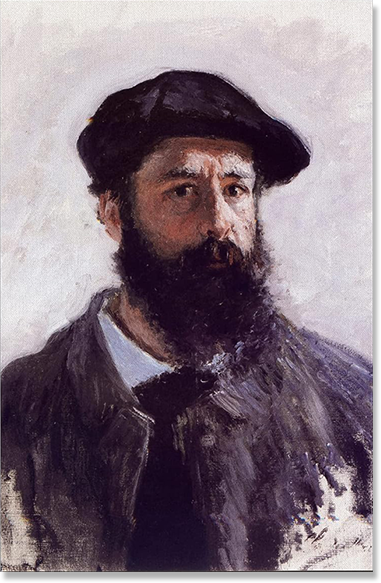
Claude Monet stands as a central figure in the Impressionist movement. From his groundbreaking work, "Impression, Sunrise," which inspired the movement's name, to iconic series like "Water Lilies" and "Rouen Cathedral," Monet's innovative approach transformed the way artists perceive and portray the world. His early years, marked by mentorship under Eugène Boudin and studies at Académie Suisse, laid the foundation for his later achievements. Monet's role as a champion of Impressionism, advocacy for plein-air painting, and influence on modern art movements highlight his multifaceted impact. Despite personal challenges, including struggles with cataracts, Monet's relocation to Giverny ushered in a prolific period, cementing his legacy as a luminary in art history and inspiring generations with his timeless contributions.
Claude Monet, born on November 14, 1840, emerged as a luminary in the art world, leaving an indelible mark on the canvas of art history. From his early education in Paris and exposure to art at the Le Havre secondary school to his pivotal encounters with mentors like Eugène Boudin, Monet's early life laid the groundwork for a revolutionary artistic journey. His mastery of plein-air painting, learned under Boudin's guidance, marked a departure from traditional approaches and set the stage for the emergence of Impressionism.
The Impressionist movement found its name and inspiration in Monet's seminal work, "Impression, Sunrise," exhibited in 1872. This painting not only challenged artistic norms but also became the catalyst for a radical shift in the art world. Collaborating with fellow Impressionists such as Renoir, Sisley, and Bazille, Monet championed the immediacy of plein-air painting, pushing the boundaries of artistic expression. His move to Argenteuil and Vétheuil, coupled with the development of series paintings like the iconic Water Lilies series, showcased his ability to capture the same subject under varying conditions, exploring the interplay of light and time.
The latter years of Monet's life, marked by a move to Giverny, were not without challenges. Struggles with cataracts posed visual impediments, but Monet's resilience led to a continued exploration of series paintings, including Haystacks and Water Lilies. His influence extended beyond Impressionism, shaping Post-Impressionist and Modernist movements. Monet's legacy endures in the enduring popularity of his works, exhibited in museums worldwide, and his impact on contemporary culture remains profound. From the birth of Impressionism to the gardens of Giverny, Claude Monet's life is a testament to the transformative power of art and the enduring legacy of a visionary artist.
Early Life (1840-1872)
Birth and Family Background
Born on November 14, 1840, in the heart of Paris, Oscar-Claude Monet came into a world pulsating with artistic energy. His parents, Claude Adolphe Monet and Louise-Justine Aubree, laid the foundation for a life that would leave an indelible mark on the canvas of art history. Raised in the ninth arrondissement, Monet's early years were steeped in the cultural milieu of a city that would later become the epicenter of his artistic endeavors.
Early Education and Exposure to Art
Monet's journey into the realm of art commenced on April 1, 1851, as he enrolled in the Le Havre secondary school of the arts. This pivotal step marked the beginning of a formal education that would nurture and cultivate his nascent artistic talent. The corridors of academia became the playground for his burgeoning creativity, providing a structured space for the seeds of artistic genius to take root.
Emergence of Artistic Talent through Charcoal Caricatures
It was during these formative years that Monet's artistic prowess began to surface. His early creations, notably charcoal caricatures, caught the eye of art enthusiasts and locals alike. These whimsical yet skillfully rendered drawings not only hinted at Monet's innate talent but also foreshadowed the innovative approach to art that would later define the Impressionist movement.
Enrollment in the Le Havre Secondary School of the Arts
The Le Havre secondary school of the arts became the crucible where Monet's artistic identity started to take shape. Under the guidance of mentors and exposure to diverse artistic influences, he laid the groundwork for a style that would challenge conventions and propel him into the vanguard of artistic innovation.
Introduction to Plein-Air Painting and Mentorship under Eugène Boudin
It was during Monet's explorations on the Normandy beaches around 1856/1857 that he encountered the influential artist Eugène Boudin. This meeting marked a turning point as Boudin became not just a mentor but a guiding force in Monet's artistic evolution. Under Boudin's influence, Monet embraced plein-air painting, the technique of capturing scenes outdoors, laying the foundation for a revolutionary shift in his approach to art.
The Formation of the Impressionist Movement (1872-1883)
Creation and Impact of "Impression, Sunrise"
In 1872, Claude Monet unveiled a painting that would become synonymous with a new artistic movement — "Impression, Sunrise." This groundbreaking work, depicting the harbor of Le Havre, not only showcased Monet's mastery of light and color but also served as a catalyst for the birth of Impressionism. Exhibited at the Paris Salon of 1874, the painting was met with mixed reviews, with critics initially using the term "Impressionism" in a derogatory manner. Little did they know that this very term would soon define a revolutionary artistic epoch.
Collaboration with Other Impressionist Artists
Monet's journey as a pioneer of Impressionism was not solitary. Collaborating with fellow luminaries such as Renoir, Sisley, and Bazille, he formed a collective that would challenge established norms and propel a radical shift in artistic expression. Together, these artists embarked on a quest to capture the essence of a scene in the moment it unfolded, rejecting the rigid constraints of academic tradition.
Embrace of Plein-Air Painting as a Defining Characteristic
The heart of Monet's artistic philosophy lay in his unwavering embrace of plein-air painting. The act of painting outdoors, immersed in the natural elements, became a defining characteristic of Impressionism. Monet's dedication to capturing the effects of light and atmosphere in real-time laid the groundwork for a movement that celebrated the immediacy and vitality of the artistic process.
How the move to Argenteuil and Vétheuil shaped up Monet
Monet's relocation to Argenteuil, a picturesque suburb of Paris, and later to Vétheuil, marked a significant chapter in his artistic evolution. The tranquil landscapes of these locations became the backdrop for some of his most iconic works. The interplay of light on water, the play of colors in the countryside, and the changing seasons influenced Monet's palette and perspective, leaving an indelible imprint on his canvases.
Growth of series paintings and techniques experimentation
During this period, Monet's artistic exploration took a novel turn with the development of series paintings. Works such as the Haystacks, Rouen Cathedral, and Water Lilies series showcased Monet's ability to capture the same subject under various conditions of light and time. This experimental approach not only pushed the boundaries of traditional painting techniques but also marked a departure into abstraction, laying the foundation for the diverse and dynamic nature of his later works.
Personal Life and Challenges (1883-1926)
Relocation to Giverny and the Establishment of the Famous Water Lily Pond
In 1883, seeking solace and inspiration, Monet made a significant move to Giverny, a quaint village in the Normandy region. It was here that he would establish his iconic residence and embark on a vast landscaping project that included the creation of a water lily pond. The enchanting surroundings of Giverny became not just Monet's home but a living canvas, where nature intertwined with artistic vision.
Struggles with Cataracts and Their Impact on Monet's Later Works
The latter years of Monet's life were marked by a formidable adversary—cataracts. A gradual decline in his eyesight posed a significant challenge, altering the artist's perception of color and light. Despite this impediment, Monet persevered, adapting his techniques to overcome the visual hurdles imposed by cataracts. This period of struggle and resilience would leave an indelible mark on his later works, imbuing them with a unique perspective shaped by both artistic vision and physical limitations.
Series Paintings in Giverny, Including Haystacks and Water Lilies
Giverny became the fertile ground for Monet's continued exploration of series paintings. The iconic Haystacks series, capturing the rural landscapes with variations in light and weather, exemplified his commitment to depicting the same subject under diverse conditions. However, it was the Water Lilies series that would emerge as the crowning achievement of Monet's later years. This masterful collection of paintings transformed the aquatic flora of his pond into timeless and contemplative works of art.
Monet's Influence on Modern Art Movements
While Monet's physical vision may have been compromised, his artistic vision continued to shape the trajectory of modern art. His innovative techniques, marked by visible brushstrokes, vibrant colors, and a departure into abstraction, resonated far beyond the Impressionist movement. Post-Impressionists like Vincent van Gogh drew inspiration from Monet, and his influence extended to subsequent art movements, including Abstract Expressionism. The echoes of Monet's approach can be traced through the works of artists like Jackson Pollock and Mark Rothko, cementing his legacy as a transformative force in the evolution of art.
Contributions to the Impressionist Movement
The Origin of “Impressionism” as a Term and Monet Role in its Adoption
Monet's artistic legacy is intricately woven into the very fabric of the Impressionist movement, a term that found its origin in his groundbreaking painting, "Impression, Sunrise" (1872). Initially coined as a critique, the term "Impressionism" was wielded by art critic Louis Leroy to mock Monet's work. However, rather than a setback, this unintended nomenclature became a banner under which a group of revolutionary artists rallied. Monet's role in embracing and embodying this term solidified him as a driving force behind the Impressionist movement.
Advocacy for Plein-Air Painting and Its Impact on the Movement
Central to Monet's contributions was his fervent advocacy for plein-air painting—a practice of capturing scenes outdoors and in the moment. This approach, championed by Monet, became a defining characteristic of the Impressionist movement. Through the act of painting directly in nature, artists could authentically capture the effects of light and atmosphere, fostering a departure from studio-bound traditions and injecting vitality into their works.
The Significance of Monet's Series Paintings in Shaping Impressionism
Monet's penchant for series paintings played a pivotal role in shaping the very essence of Impressionism. Works like the Haystacks, Rouen Cathedral, and Water Lilies series showcased his ability to explore the same subject across different conditions, capturing the ever-changing nuances of light and time. This innovative approach not only provided a new perspective on familiar subjects but also pushed the boundaries of traditional artistic representation, establishing a hallmark of the Impressionist movement.
Influence on Other Artists, Both Within and Beyond the Impressionist Circle
Monet's influence radiated beyond the confines of the Impressionist circle, inspiring a generation of artists who sought to break free from academic constraints. His techniques, characterized by visible brushstrokes and vibrant colors, directly impacted contemporaries like Pierre-Auguste Renoir and Camille Pissarro. Furthermore, the ripples of Monet's innovation extended into later movements, including Post-Impressionism, as seen in the works of Vincent van Gogh.
Monet as a Champion and Advocate for the Impressionist Movement
Beyond his artistic contributions, Monet assumed the role of a champion and advocate for the Impressionist movement. His commitment to the principles of Impressionism, notably the freedom to paint one's impression of a subject rather than its literal view, set a precedent for artists within the movement. Monet's unwavering belief in the transformative power of the Impressionist approach positioned him as a guiding force, and his dedication played a pivotal role in establishing Impressionism as a revolutionary and enduring artistic movement.
Legacy and Impact
Recognition and Critical Reception During Monet's Lifetime
Claude Monet, during his lifetime, experienced both acclaim and criticism for his pioneering approach to art. The Paris Salon of 1874, where "Impression, Sunrise" was exhibited, marked a turning point. While some critics disparaged the work, the term "Impressionism" emerged from the controversy. Monet's unique style and departure from traditional techniques garnered attention, eventually leading to a growing recognition within artistic circles.
Posthumous Legacy and Continued Influence on the Art World
Monet's influence transcended the boundaries of his era, and his posthumous legacy remains a testament to his enduring impact on the art world. His innovative techniques, particularly in capturing light and atmosphere, laid the groundwork for future movements. Post-Impressionists, Modernists, and even contemporary artists have drawn inspiration from Monet's oeuvre, ensuring that his legacy continues to evolve with each passing artistic generation.
The Enduring Popularity of Monet's Works in Contemporary Culture
Monet's works have not only stood the test of time but have flourished in contemporary culture. His paintings, characterized by vibrant colors and a sense of immediacy, resonate with audiences across the globe. The accessibility and universality of his themes, from serene water lilies to sunlit haystacks, have made Monet's art a timeless presence, finding a place in popular culture, design, and even commercial adaptations.
Museums and Exhibitions Dedicated to Monet's Art
Monet's impact is vividly showcased in the numerous museums and exhibitions dedicated to his art. Institutions such as the Musée d'Orsay in Paris, the Claude Monet Foundation in Giverny, and the Museum of Modern Art (MoMA) in New York house extensive collections of his works. These spaces not only preserve the legacy of Monet but also provide a pilgrimage for art enthusiasts seeking an immersive encounter with the masterpieces that shaped the course of art history.
Claude Monet's legacy extends beyond the confines of his time, and his art continues to be a source of inspiration, contemplation, and admiration for generations to come. The ripple effect of his innovation and the timeless allure of his canvases ensure that Monet remains an indelible figure in the rich tapestry of art.
Claude Monet’s Most Famous Oil Paintings
Claude Monet is one of the most famous artists in history, and he made significant contributions towards Impressionist movement. Some of his famous oil paintings include:
Impression, Sunrise (1872): The painting coined a term impressionism and represents a scene of Le Havre port on Normandy coast where he was born and raised too. The artist brilliantly portrays how sunshine brightens up water within the harbor area.
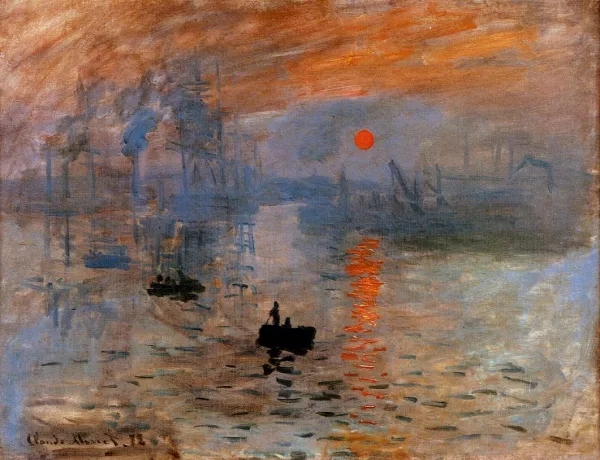
Water Lilies (1916): These works capture a garden full of flowers found below Monet’s house in Giverny, France. They also demonstrate some revolutionary painting techniques used by Monet hence reflecting the way light as well as color change with time
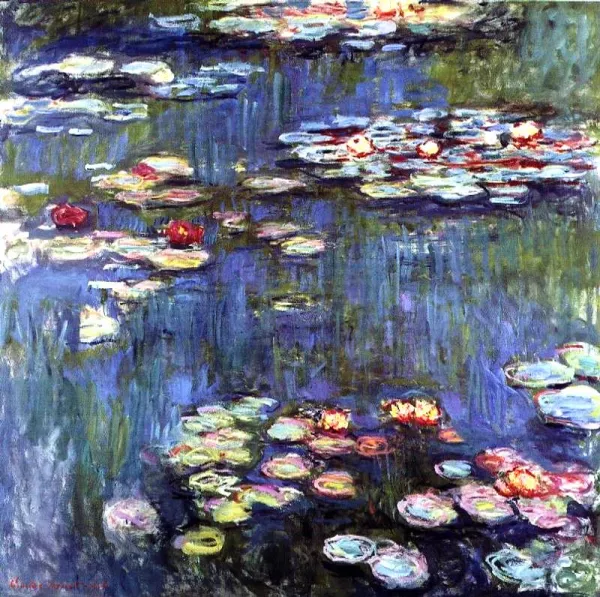
Haystacks (1890-1891): Being a series set under varying lighting conditions on the same theme – haystacks - it demonstrates how Monet can paint one subject matter under different light and timing situations. The paintings also illustrate how he embraced innovative techniques through choice of colors.
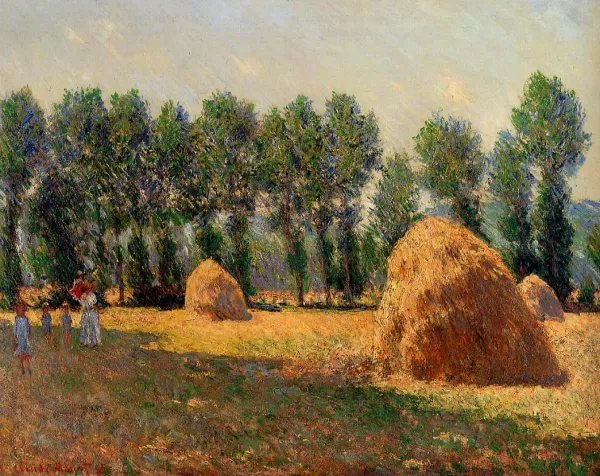
Rouen Cathedral (1892-1894): This set shows Rouen Cathedral from different sides and under various lighting conditions with the aim of capturing the light and atmosphere, which is a characteristic of Monet’s style. The paintings also demonstrate innovative techniques and use of color by Monet.
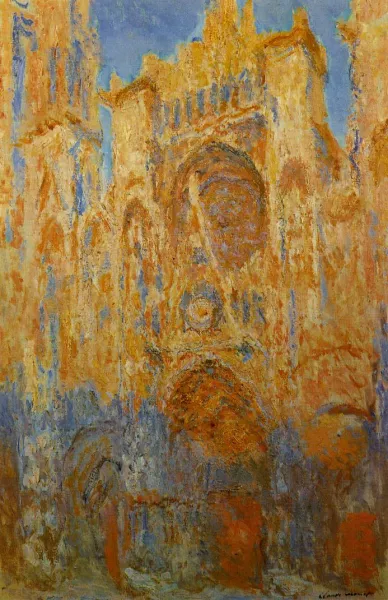
Poppy Field (1873): This painting portrays a field full of poppies in Argenteuil, France reflecting Monet’s amazing ability to apply color as well as rendering effects of light and atmosphere on the landscape.
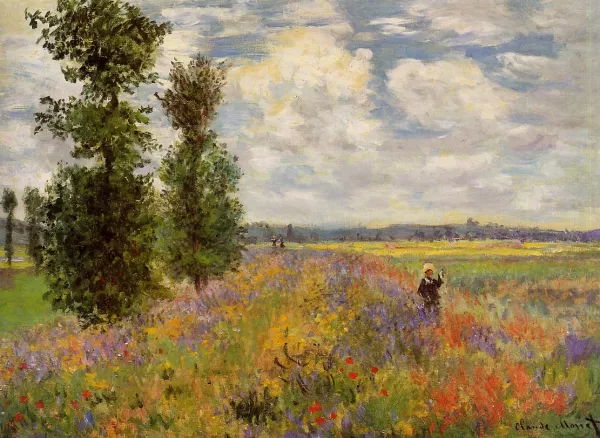
Woman with a Parasol (1875): In this painting, Monet showed his wife Camille along with his son Jean while walking across a terrain. The painting exemplifies how Monet applies color as well as shows the impact that light and atmosphere have on landscapes.
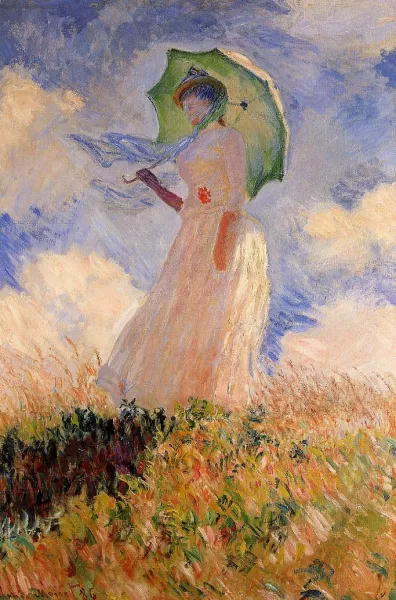
The Japanese Bridge at Giverny (1899): This picture shows the bridge in Monet's garden at Giverny, France. Through the painting, Monet can capture light and atmosphere changes in a landscape hence depicting water effect.
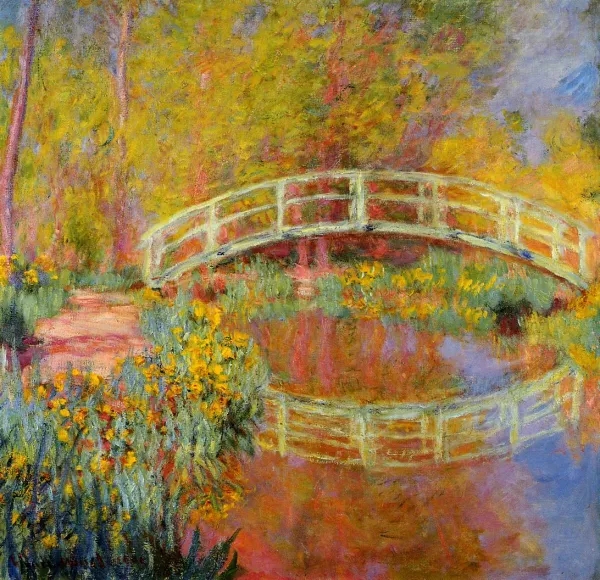
The Seine at Argenteuil (1874): The artwork is about Seine River found in Argenteuil, France that reflects different shades of color used by Monet as well as lighting effects and atmospheric influences on water surface.
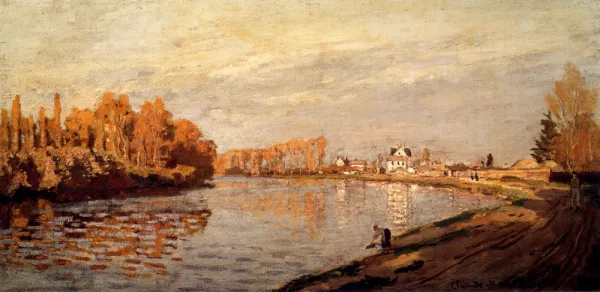
The Houses of Parliament (1900-1905): Most pictures are views from different angles showing buildings including river Thames but these are among few works where we see only one monument.
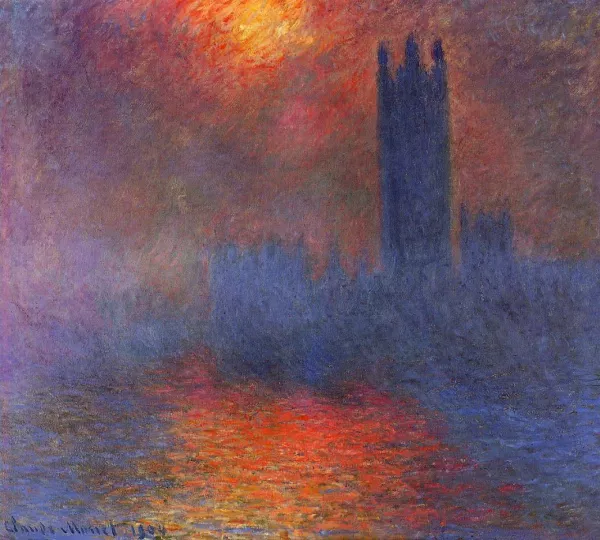
The Regatta at Sainte-Adresse (1867) is a painting that shows a regatta in the town of Sainte-Adresse, France. The main focus is Monet’s color use and how he captures the atmosphere and light on the water and land.
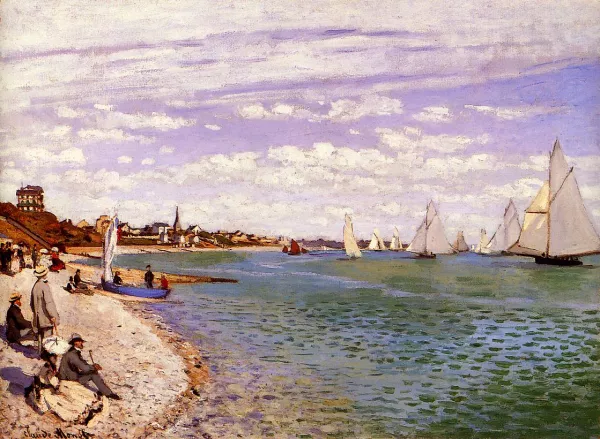
The most common French oil paintings by Monet are known for their good understanding of light and air effects on different objects, unique techniques as well as application of color.
Death
On December 5, 1926, Claude Monet, the maestro of Impressionism, drew his final breath at the age of 86, surrendering to lung cancer. True to his penchant for simplicity, the funeral, attended by a modest fifty people, marked the artist's passage to the afterlife, laying him to rest in the peaceful confines of the Giverny church cemetery—a fitting backdrop for the farewell of a painter whose canvas was nature itself.
The bequest of Monet's renowned home and garden, adorned with the iconic waterlily pond, to the French Academy of Fine Arts in 1966 ushered in a new chapter of legacy. In 1980, following meticulous refurbishment, the Fondation Claude Monet flung open the gates to the public, inviting art enthusiasts and curious minds to tread the hallowed grounds of creativity. This haven, now a museum, not only safeguards the tangible remnants of Monet's existence but also harbors his curated collection of Japanese woodcut prints, offering a nuanced perspective into the wellspring of his artistic inspiration. Giverny, with its lush flora and the echoes of Monet's artistic odyssey, stands as a cherished destination for global tourists—a testament to an artist whose brushstrokes transcended his time and continue to ripple through the currents of art history.
Monet's Lasting Impact on Artistic Evolution
In tracing the threads of art history, the life and artistic odyssey of Oscar-Claude Monet unfold a narrative of creativity, resilience, and transformative insight. Commencing in 1840, Monet's artistic sojourn commenced amidst the vibrancy of Paris, where he meticulously honed his craft, navigating the dynamic currents of 19th-century art. From early charcoal caricatures to the revolutionary "Impression, Sunrise," Monet's artistic evolution reflects an unwavering pursuit of capturing the essence of his surroundings.
At the core of Monet's legacy lies his pivotal role in the Impressionist movement—a rebellion against conventions, championing the immediacy of artistic expression. The term "Impressionism," born from the critique of his work, became a rallying cry for a collective of artists challenging academic norms and ushering in a new era in art. Monet's advocacy for plein-air painting, innovative series works, and his profound influence on contemporaries and subsequent generations position him as a guiding force in the ever-evolving landscape of artistic expression.
Beyond the confines of his era, Monet's influence endures, etched in the luminosity dancing across his canvases and the vibrant colors that continue to captivate hearts. The gardens of Giverny echo with the whispers of his artistic vision. Recognition during his lifetime was just the beginning; Monet's posthumous legacy has become a foundational influence on the art world.
In contemporary culture, Monet's works maintain an enduring popularity, transcending temporal and cultural boundaries. Museums and exhibitions dedicated to his art stand as monuments to his genius, inviting audiences to immerse themselves in the world he painted. Claude Monet, with his innovative techniques and commitment to capturing fleeting beauty, remains an indelible luminary. His journey, from the Seine's banks to Giverny's water lily ponds, is a testament to art's transformative power—a visionary artist painting the world with a vibrant and impressionistic palette.
***
Claude Monet's art transcends time and cultural boundaries, remaining embraced by modern audiences. Museums housing his works stand as enduring tributes to his talent, offering visitors a chance to experience his innovative ideas firsthand. Monet's unique techniques, capturing transient beauty, have left an indelible mark, making him an unforgettable figure in the world of art. From the banks of the Seine River to the lily pond in Giverny, Monet's journey unfolds as a testament to the transformative power of art. As a visionary artist, he painted a vivid and impressionistic picture across the globe, leaving behind a colorful legacy that continues to captivate admirers.